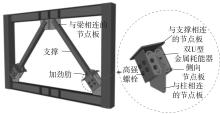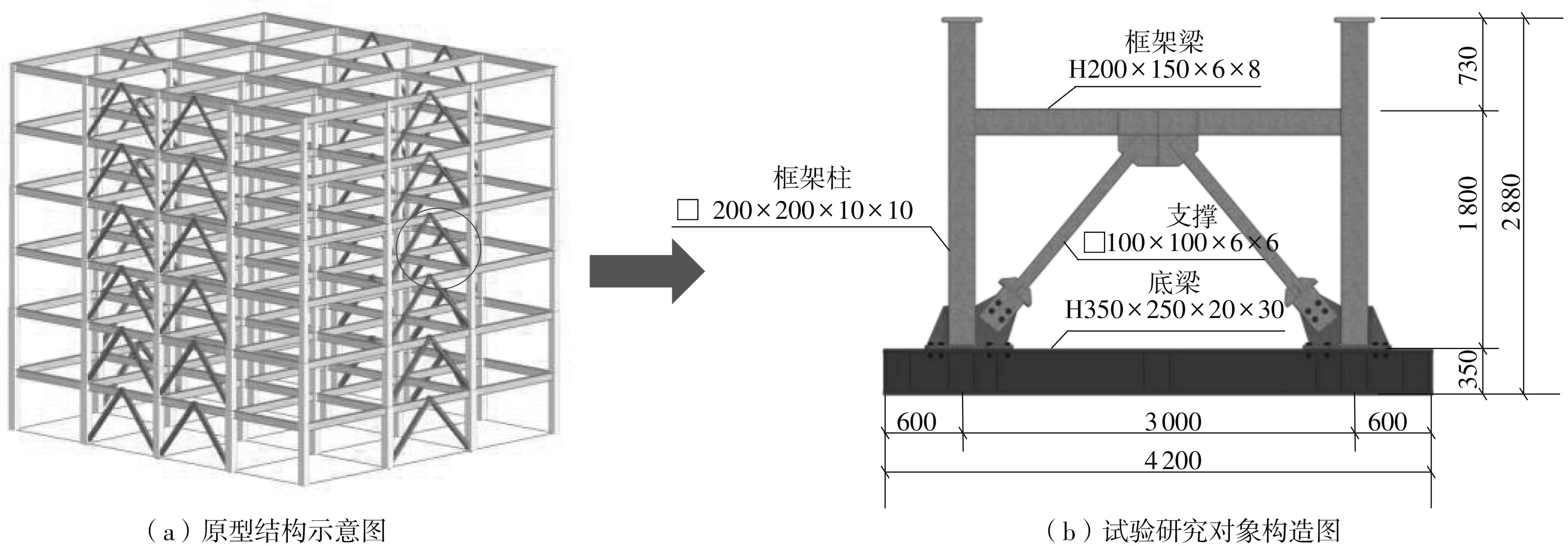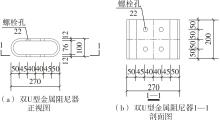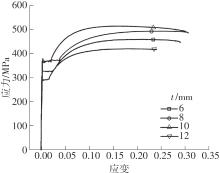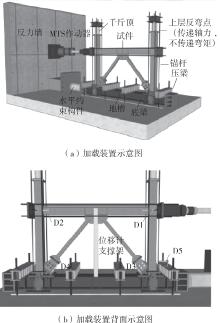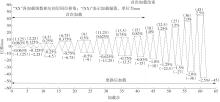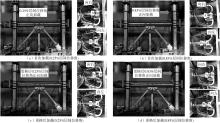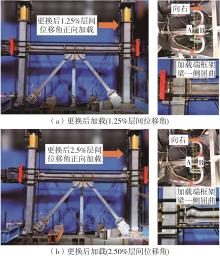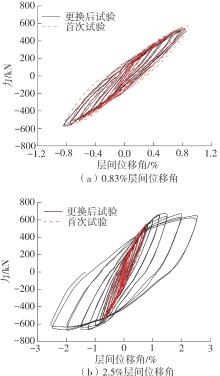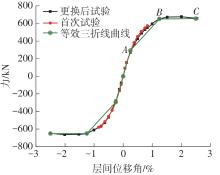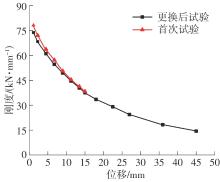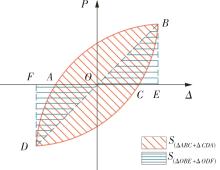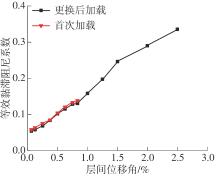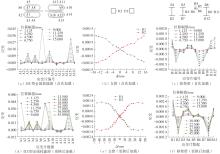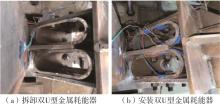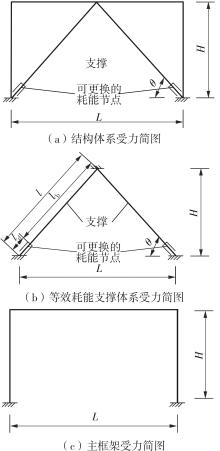Journal of South China University of Technology(Natural Science Edition) ›› 2025, Vol. 53 ›› Issue (7): 126-138.doi: 10.12141/j.issn.1000-565X.240454
• Architecture & Civil Engineering • Previous Articles Next Articles
Experimental Study on Seismic Performance of Chevron Braced Steel Frames with Replaceable Energy Dissipation Joints
MA Hongwei1, LI Ming1, XIONG Wei2,3, HUANG Zhonghai4, XU Jiaxin1, HE Wenhui1
- 1.School of Civil Engineering and Transportation,South China University of Technology,Guangzhou 510640,Guangdong,China
2.Guangzhou Construction Co. ,Ltd. ,Guangzhou 510288,Guangdong,China
3.China Guangzhou International Economic and Technical Cooperation Co. ,Ltd. ,Guangzhou 510180,Guangdong,China
4.RBS Architectural Engineering Design Associates,Guangzhou 510170,Guangdong,China
-
Received:2024-09-11Online:2025-07-25Published:2025-02-28 -
Contact:何文辉(1975—),男,博士,讲师,主要从事钢结构研究。 E-mail:hwma@scut.edu.cn;ctwhhe@scut.edu.cn -
About author:马宏伟(1973—),男,博士,副教授,主要从事钢结构和组合结构研究。E-mail: hwma@scut.edu.cn -
Supported by:the Guangdong S & T Program(2020B0202010008)
CLC Number:
Cite this article
MA Hongwei, LI Ming, XIONG Wei, HUANG Zhonghai, XU Jiaxin, HE Wenhui. Experimental Study on Seismic Performance of Chevron Braced Steel Frames with Replaceable Energy Dissipation Joints[J]. Journal of South China University of Technology(Natural Science Edition), 2025, 53(7): 126-138.
share this article
Table 2
Characteristic loads and displacement of specimens"
| 阶段 | 类型 | 位移/mm | 荷载/kN | 层间位移角 |
|---|---|---|---|---|
| 屈服点 | 正向(+) | 11.32 | 495.00 | 1/159 |
| 负向(-) | 10.07 | 500.70 | 1/179 | |
| 平均 | 10.70 | 497.85 | 1/168 | |
| 更换点 | 正向(+) | 15.00 | 551.80 | 1/120 |
| 负向(-) | 15.14 | 580.30 | 1/120 | |
| 平均 | 15.07 | 566.05 | 1/120 | |
| 峰值点 | 正向(+) | 36.10 | 676.67 | 1/50 |
| 负向(-) | 35.13 | 673.00 | 1/50 | |
| 平均 | 35.62 | 670.14 | 1/50 | |
| 极限点 | 正向(+) | 45.79 | 656.62 | 1/40 |
| 负向(-) | 45.13 | 649.33 | 1/40 | |
| 平均 | 45.46 | 652.98 | 1/40 |
Table 3
Comparison of loading levels between two tests"
加载 级数 | 层间位移角/% | 位移幅值/mm | 残余层间位移角/% | 刚度(试验值)/(kN·mm-1) | 刚度(试验值)误差/% | 刚度(理论值)/(kN·mm-1) | 备注 | |||
|---|---|---|---|---|---|---|---|---|---|---|
| 首次 | 更换后 | 首次 | 更换后 | 首次(误差) | 更换后(误差) | |||||
| 1 | 0.06 | ±1.125 | 0.02 | 0.02 | 78.11 | 73.77 | 5.56 | 76.62(-1.91%) | 76.62(3.72%) | 初始 |
| 2 | 0.13 | ±2.250 | 0.04 | 0.04 | 72.00 | 66.06 | 8.25 | |||
| 3 | 0.25 | ±4.500 | 0.07 | 0.08 | 63.68 | 61.05 | 4.13 | |||
| 4 | 0.38 | ±6.750 | 0.04 | 0.05 | 57.21 | 54.60 | 4.56 | |||
| 5 | 0.50 | ±9.000 | 0.09 | 0.10 | 50.56 | 49.42 | 2.25 | |||
| 6 | 0.63 | ±11.250 | 0.14 | 0.13 | 45.40 | 44.55 | 1.87 | |||
| 7 | 0.75 | ±13.500 | 0.22 | 0.21 | 41.21 | 40.34 | 2.11 | |||
| 8 | 0.83 | ±15.000 | 0.28 | 0.27 | 38.27 | 37.56 | 1.86 | |||
| 9 | 1.00 | ±18.000 | 0.30 | 33.47 | ||||||
| 10 | 1.25 | ±22.500 | 0.51 | 29.04 | ||||||
| 11 | 1.50 | ±27.000 | 0.78 | 24.35 | ||||||
| 12 | 2.00 | ±36.000 | 1.26 | 18.55 | ||||||
| 13 | 2.50 | ±45.000 | 1.54 | 14.36 | - | |||||
| [1] | 建筑抗震韧性评价标准: [S]. |
| [2] | 吕西林,陈聪 .设置可更换连梁的双筒体混凝土结构振动台试验研究[J].建筑结构学报,2017,38(8):45-54. |
| LU Xilin, CHEN Cong .Shaking table tests of double tube concrete structure with replaceable coupling beams [J].Journal of Building Structures,2017,38(8):45-54. | |
| [3] | 郝际平,孙晓岭,薛强,等 .绿色装配式钢结构建筑体系研究与应用[J].工程力学,2017,34(1):1-13. |
| HAO Ji-ping, SUN Xiao-ling, XUE Qiang,et al .Research and applications of prefabricated steel structure building systems[J].Engineering Mechanics,2017,34(1):1-13. | |
| [4] | GHAMARI A, KIM Y-J,BAE J .Utilizing an I-shaped shear link as a damper to improve the behaviour of a concentrically braced frame[J].Journal of Constructional Steel Research,2021,186:106915/1-13. |
| [5] | 陈政清,华旭刚,杨鸥,等 .一种具备耗能承载双功能的抗震构件及缓冲器:CN114263289 A[P].2022-04-01. |
| [6] | BAKHSHAYESH Y, SHAYANFAR M, GHAMARI A .Improving the performance of concentrically braced frame utilizing an innovative shear damper[J].Journal of Constructional Steel Research,2021,182:106672/1-21. |
| [7] | GRAY M G, CHRISTOPOULOS C, PACKER A J .Design and full-scale testing of a cast steel yielding brace system in a braced frame[J].Journal of Structural Engineering,2016,143(4):04016210/1-9. |
| [8] | ZHENG L, DOU S, TANG S,et al .Seismic performance of improved multistorey X-braced steel frames[J].Journal of Constructional Steel Research,2024,212:108306/1-15. |
| [9] | 庄朝禄 .钢结构呼吸耗能斜撑试验研究[D].广州:华南理工大学,2021. |
| [10] | DURSUN S E, TOPKAYA C .Development of H-shaped hysteretic dampers for steel concentrically braced frames[J].Soil Dynamics and Earthquake Engineering,2023,166:107758/1-15. |
| [11] | 黄晨凯,赵宝成 .开孔形式影响装配式耗能支撑滞回性能研究[J].工程力学,2021,38(12):81-96. |
| HUANG Chen-kai, ZHAO Bao-cheng .Influences of the shape of holes on the hysteretic performance of assembled energy dissipation braces[J].Engineering Mechanics,2021,38(12):81-96. | |
| [12] | ANDREOTTI R, GIULIANI G, TONDINI N .Experimental analysis of a full-scale steel frame with replaceable dissipative connections[J].Journal of Constructional Steel Research,2023,208:108036/1-15. |
| [13] | HASSAN M, VASDRAVELLIS G, VAMVATSUKOS D .Eurocode-8-conforming seismic design and behaviour factor of high-post-yield stiffness concentrically-braced steel frames[J].Earthquake Engineering & Structural Dynamics,2023,52(5):1536-1556. |
| [14] | XIANG Y, ZHOU X H, KE K,et al .Experimental research on seismic performance of cold-formed thin-walled steel frames with braced shear panel[J].Thin-Walled Structures,2023,182(PA):110210/1-19. |
| [15] | 金属材料拉伸试验:第1部分:室温试验方法: [S]. |
| [16] | Seismic Provisions for Structural Steel Buildings,ANSI/AISC 341-10 [S]. |
| [17] | 建筑抗震试验规程: [S]. |
| [18] | 冯鹏,强翰霖,叶列平 .材料、构件、结构的“屈服点”定义与讨论[J].工程力学,2017,34(3):36-46. |
| FENG Peng, QIANG Han-lin, YE Lie-ping .Discussion and definition on yield points of materials,members and structures[J].Engineering Mechanics,2017,34(3):36-46. | |
| [19] | 建筑抗震设计规范: [S]. |
| [20] | 杜红凯,韩淼,闫维明,等 .锰钢U形限位器承载力试验及弹塑性回归分析[J].建筑结构学报,2016,37(8):108-114. |
| DU Hongkai, HAN Miao, YAN Weiming .Capacity experiment and elsto-plastic regression analysis for U-shaped manganese steel limiter[J].Journal of Building Structures,2016,37(8):108-114. | |
| [21] | 李宗京 .新型高性能钢框架-支撑结构体系理论及试验研究[D].南京:东南大学,2019. |
| [1] | CHEN Qingjun, LEI Jun, LI Bingzhou, et al. Seismic Performance of Hoop Head Tenon Timber Joint with Added Corner Dampers [J]. Journal of South China University of Technology(Natural Science Edition), 2024, 52(7): 119-134. |
| [2] | DING Faxing, CAI Yongqiang, WANG Liping, et al.. Seismic Performance Analysis of Welded Multi-Cavity Double Steel Plate-Concrete Composite Shear Wall [J]. Journal of South China University of Technology(Natural Science Edition), 2024, 52(1): 15-25. |
| [3] | CHEN Qingjun, LI Bingzhou, CHEN Yinian, et al. Seismic Performance of Hoop Head Tenon Frame Structure Reinforced by Sparrow Brace Type Damper [J]. Journal of South China University of Technology(Natural Science Edition), 2023, 51(4): 9-20. |
| [4] | HUANG Haibin, WANG Yanchao, LIU Yazhou, et al. Seismic Performance of CFT Column-to-Beam Joints with Detached Vertical Stiffeners [J]. Journal of South China University of Technology (Natural Science Edition), 2020, 48(3): 55-66. |
| [5] |
ZENG Fanliang HUANG Yansheng ZHOU Jing.
Reliability Verification for Seismic Capacity Utilization Factors of Structure
|
| [6] | GUO Meng LIU Zhi-yuan HUANG Wei WANG Shuang-jiao YUAN Quan . Experiment on Seismic Performance of Earthquake Damage Frame Strengthened with Aerated Concrete Block Composite Wall [J]. Journal of South China University of Technology (Natural Science Edition), 2016, 44(10): 117-124. |
| [7] |
Lei Zhen Qu Jun-tong Wang Yong.
Seismic Performance of FRP-Strengthened Seismically-Damaged RC-Brick Masonry Walls with Opening
[J]. Journal of South China University of Technology (Natural Science Edition), 2015, 43(7): 84-91.
|
| [8] | Yang Chun Pan Jian- ming Cai Jian Liao Xiang- sheng Li Guang- xing . Evaluation of Seismic Performances of Super High- Rise Frame- Core Wall Structure [J]. Journal of South China University of Technology (Natural Science Edition), 2013, 41(6): 84-90. |
| [9] | Yang Chun Li Guang-xing Wu Yi Chen Liang-xing Zhang Chun-mei. Assessment of Seismic Performances of Overrun SRCFrame-Supported Shear Wall Structure [J]. Journal of South China University of Technology (Natural Science Edition), 2013, 41(3): 35-42. |
| [10] | Lei Zhen Zhou De-yuan Wang Ji-bing. Seismic Performances of Masonry Walls Strengthened with BasaltFiber-Reinforced Polymer [J]. Journal of South China University of Technology (Natural Science Edition), 2013, 41(3): 43-49,75. |
| [11] | Xu Yan Duan Xin-zhi Li Jian-zhong. Analysis of Nonlinear Seismic Response of Cable-Stayed Bridge Subjected to Longitudinal Strong Ground Motions [J]. Journal of South China University of Technology(Natural Science Edition), 2012, 40(6): 132-138. |
| [12] | Han Xiao-lei Chen Xue-wei Dai Jin-hua Cheang Jack He Wei-qiu . Numerical Analysis for Low-Cyclic Loading Test of Shear Walls Based on OpenSEES [J]. Journal of South China University of Technology (Natural Science Edition), 2008, 36(12): 7-12. |
| [13] | Shao Jian-hua Gu Qiang Shen Yong-kang. Finite Element Analysis of Seismic Performance of Steel Plate Shear Walls [J]. Journal of South China University of Technology (Natural Science Edition), 2008, 36(1): 128-133. |
| Viewed | ||||||
|
Full text |
|
|||||
|
Abstract |
|
|||||
